Upper Valley landowners increasingly require hunters to get permission
|
Published: 11-25-2023 1:44 PM
Modified: 11-27-2023 4:37 PM |
NORWICH — Martin Philip hunts deer on John Lamppa’s 40 acres of posted property in Norwich — with Lamppa’s permission.
Philip, a burgeoning bow hunter who didn’t start hunting until adulthood, was looking to find land to practice on where deer were in ample supply. Through a mutual friend he was connected to Lamppa, who had received a depredation permit from the Vermont Fish and Wildlife Department because deer were devouring his orchard of 400 hazelnut trees.
“I counted 39 deer in my yard in one night,” Lamppa said. The depredation permit would allow someone hunting on Lamppa’s land to kill deer beyond their own permitted allotment.
Deer still leave rub marks on the bark of his trees, but overall the system has “worked pretty well,” Lamppa said. “It hasn’t totally deterred the deer, but they’ve largely stopped coming back.”
The two men’s relationship, effective as it is, exists in a network of official permits and informal allowances that runs counter to the traditional open-land ethic that largely defines property rights in Vermont.
The state’s open land-use statute, written into the Vermont constitution in 1793, has kept private property accessible to the public — no questions asked — for centuries. “The inhabitants of this State shall have liberty in seasonable times, to hunt and fowl on the lands they hold, and on other lands not inclosed,” reads Section 67, which hunters are quick to cite.
The practice of posting has existed nearly as long as the constitutionalization of public access. Where land is posted, people can hunt only with permission from the landowner, or they can’t hunt at all.
New Hampshire also has long legislated for the “private property, public access” ethos.
Article continues after...
Yesterday's Most Read Articles
 Homeless Upper Valley couple faces ‘a very tough situation’
Homeless Upper Valley couple faces ‘a very tough situation’
 Lebanon’s Jewell back from auto accident, more aware of ‘drowsy driving’ dangers
Lebanon’s Jewell back from auto accident, more aware of ‘drowsy driving’ dangers
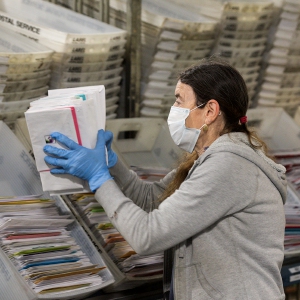 Plan on track to ship Upper Valley mail to Connecticut for sorting
Plan on track to ship Upper Valley mail to Connecticut for sorting
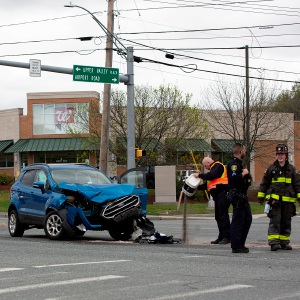 West Lebanon crash
West Lebanon crash
 Crane crash on Interstate 89
Crane crash on Interstate 89
And while most land in the two states remains open, there has been a recent spike in postings, particularly in Vermont. The total acreage guarded by the signs, which should be posted at intervals along the boundaries of a property, increased from 100,000 acres in 1971 to 230,000 acres in 2011. In 2020, 264,500 acres were posted. In 2022, posted acreage dropped slightly to 240,600.
Penalties for disobeying posted signs include fines, hunting license suspension and prison time.
There are 55 parcels posted in Norwich this year, accounting for 13% of land in the town, according to town records. It’s the greatest number of individual parcels posted in Norwich in the last five years.
However, there’s likely more land posted than officially recorded across the Upper Valley, said Norwich Town Clerk Lily Trajman. “I have a strong suspicion that some landowners don’t actually record their postings or update their signage every year,” she wrote in an email.
Lamppa posted his land for safety reasons. “Look, we’ve got two little kids running around,” he said. “So I went to Dan & Whit’s and got a roll of posted sheets.”
But in addition to Philip, Lamppa invites four or five other hunters he knows onto his property. Some he’s given permission after they knocked on his door and asked for it.
Chris Lang also chose to post his 70 acres in Norwich. After he first posted in 2011, he was approached by a hunter who had hunted on his land for years. But Lang told him, “Look, I’d just rather if you didn’t.”
He wants to be in the woods, walking his dogs, and otherwise on his land undisturbed in hunting season because “that’s when the bugs are gone and I’m trying to get stuff done before winter,” he said. “It’s really just a safety thing.”
Lang, who grew up in Woodstock, used to be a deer hunter himself. “I know it’s a tradition in Vermont,” he said. “I have nothing against it.” He just wants more control over what happens on his property, he said.
Plus, he lives near the Appalachian Trail.
“There are a lot of other people that recreate where we are, so there’s just a lot of people back and forth with their dogs,” he said. “It’s not just us here.”
Recreation is also part of what Lang’s posting against. In the months when the COVID-19 pandemic was at its peak, Lang said the increase in walkers and runners on his land was “profound.”
To stave off altercations between hunters and landowners, the Fish and Wildlife departments in both states (in New Hampshire, it’s known as Fish and Game), offer robust hunter education courses that emphasize landowner relations and the fair treatment of other people’s property.
But there’s very little geared toward education of other kinds of recreationists. Ill-informed trail runners can end up trespassing on posted land, too.
Lang chalks up the degree of irritation in part to route tracking apps, such as Strava. Someone could go on a run that crosses his property, post their path online, and suddenly throngs of people show up to go on the same run.
Regardless of why a property is posted, the bump in closed land across Vermont is concerning to Fish and Wildlife officials.
Vermont’s dense deer population faces a decline in habitat quality as forests age. Deer eat saplings too quickly for them to mature and replace the overstory, leaving forests vulnerable to invasive species such as buckthorn, which shade out native vegetation.
Less diverse forests also aren’t as able to bounce back from damage by severe weather events.
While there was a dramatic surge in hunting licenses purchased in 2020 — the first year of the pandemic — an increase in posted land has made it more difficult to biologically manage deer through hunting, said Andrea Shortsleeve, a private lands habitat biologist with the Vermont Department of Fish and Wildlife.
Excessive deer browsing, like in Lamppa’s hazelnut orchard, is “changing the whole structure of our forests,” Shortsleeve said, “and will for a long time.”
Vermont’s tax abatement law gives landowners a tax cut for keeping property in forestry or farming. Under current use, a landowner must have a management plan written up by a licensed forester.
Concerned about the impact of deer on mature forests, Shortsleeve makes a point of asking about posted land on walks with property owners.
In addition to the benefits of hunting for forest management, having someone on your property regularly as a hunter and angler keeps “eyes and ears” on your land, she tells people. “They can let you know what’s going on out there,” she said. “Oftentimes hunters will be in areas that other people generally aren’t.”
She emphasizes, too, that deer meat can be an essential source of local meat for families. In 2022, Vermont hunters killed more than 17,400 deer, providing about 3.5 million servings of venison, according to Fish and Wildlife data.
And, finally, it comes down to “culture,” she said.
“This is just a piece of what people do here in Vermont,” she said. “It goes back a long time, and people have really strong ties to the land through hunting.”
For newcomers, allowing hunters on your property is a great way to “make connections,” she said. “It’s one of the things that bleeds into the culture here.”
In an effort to keep that blood flowing, Fish and Wildlife created the “Hunter-Landowner Connection,” a database meant to connect landowners to people looking for spots to hunt in specific towns.
But Doug Hill, a hunter from Hartland, has been in the database for years and “never got contacted once,” he said. “It’s back to the old-fashioned way. Word of mouth.”
Norwich isn’t alone in its climbing postings. Between 2021 and 2022, posted acreage in Hartland increased from 2,986 to 4,135, accounting for about 14% of land in town. In 2023, it dropped to 3,753 acres.
Hill noted that the division of land into smaller, individually-owned lots — a problem conservationists are facing writ large — is uniquely impacting hunting, too.
These days, it’s difficult to find contiguous tracts of unposted land to hunt, he said.
“Let’s say you have what was once a 75-acre piece and it gets broken, divided into parcels, and then there’s a somewhat fair-sized chunk of it posted off,” he said. “It’s a big problem. That land is still there, but you might not be able to use it the way that it’s efficient to hunt.”
The story’s largely the same in New Hampshire. But posting occurs in smaller numbers, and the state doesn’t record the posted land like they do in Vermont, where landowners are required to record their postings with the town clerk, who sends a copy to Fish and Wildlife.
Increases in posted land are anecdotal, said Mark Beauchesne, of the New Hampshire Fish and Game Department. But what happens in Vermont “trickles down” over here, Beauchesne said.
Beauchesne was quick to quote early 20th century poet Robert Frost, the storied New England stand-by: “Whose woods these are, I think I know,” he said, reciting Frost’s verse with passion. “His house is in the village, though.”
“That’s private property, with public access,” Beauchesne said. “That’s what that is.”
He stressed that in other states, like Ohio, “everything is locked down.”
“There’s very little public land,” he said.
“It’s all private. If you want to recreate, hunt or fish, you have to pay the landowner to do that.”
New Hampshire’s own current use legislation includes an additional incentive to keep land open the public. The “recreational discount” knocks 20% off a property owner’s current use assessment value, provided they keep their property open for six categories of recreation: hunting, fishing, hiking, nature observation, skiing and snowshoeing.
Fish and Game also offers 14 signs related to hunting to encourage landowners concerned about hunting to pursue other avenues apart from all-out posting. “Safety Zone” signage limits shooting to certain areas of a property, and “Caution — Horses,” keeps marksmen on alert for the equine.
“Though one option is to post your entire property against all public access, that’s not always an appropriate response to a specific issue,” according to the department’s website. “And while posting one parcel here and there may not seem like a big deal, it adds up when many lands are posted against public use. Collectively, we all pay the consequence of dwindling access opportunities.”
Similar leeway in land restrictions exists in Vermont, and both states have strict property owner liability protections.
“What I’ve seen from my experience dealing with new landowners, or landowners that now want to post their property, is that they have bad information in regards to hunting,” Beauchesne said. “Primarily because it involves a firearm.”
In a gesture of goodwill, Philip — who hunts on Lamppa’s land in Norwich, and is also a baking ambassador at King Arthur Baking Company — has made a habit of dropping bread on the doorstep of the landowners that open their property to him. “Then hopefully they realize that I’m a nice, normal person,” he said.
The tension between hunters and landowners is rooted in assumptions, on both sides, Philip said. It comes down to reputation.
“On the hunters’ side, people out there think it’s all flatlanders and it’s all posted,” Philip said. “And then on the landowners’ side, every November there are guys driving up and down your road in trucks road hunting.
“These groups are making sort of out-sized and largely incorrect assumptions about each other,” he said.
Frances Mize is a Report for America corps member. She can be reached at fmize@vnews.com or 603- 727-3242.
CORRECTION: Martin Philip is a baking ambassador for King Arthur Baking Company. A previous version of this story misstated his position at the company. The same story also misstated the name of the company.

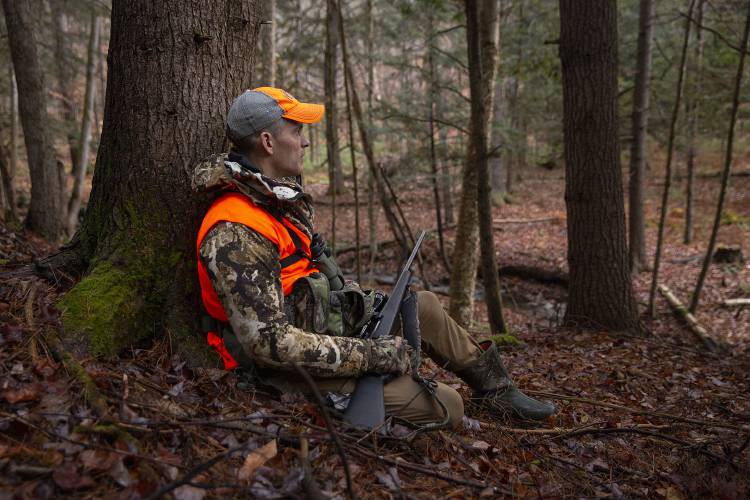
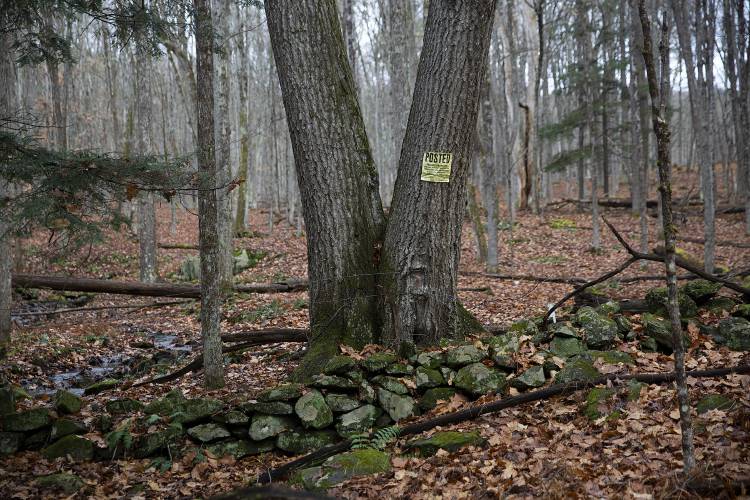
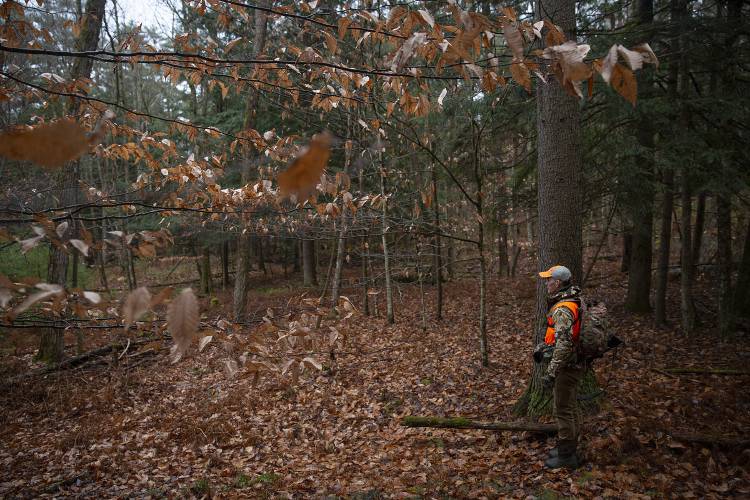
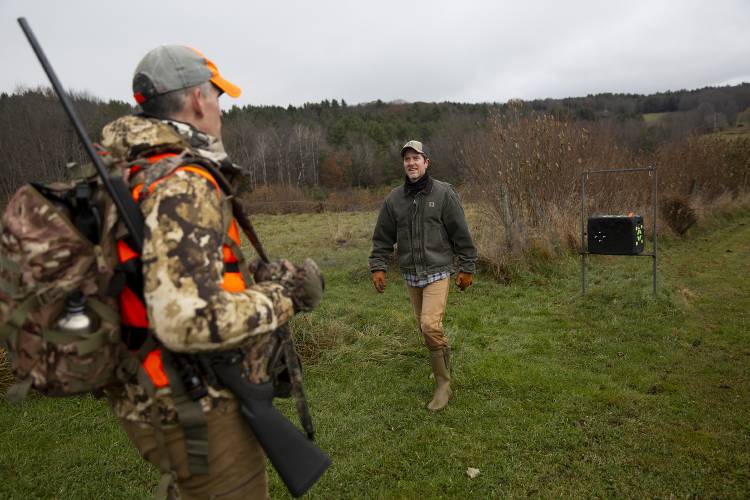
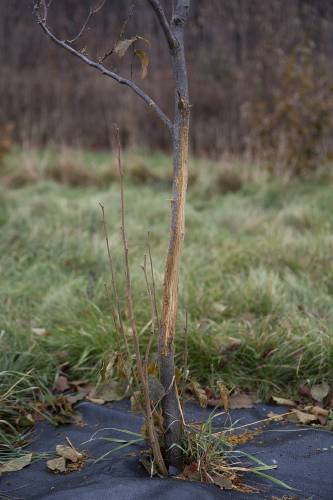
 Kenyon: Constitutional rights should trump Dartmouth’s private interests
Kenyon: Constitutional rights should trump Dartmouth’s private interests
